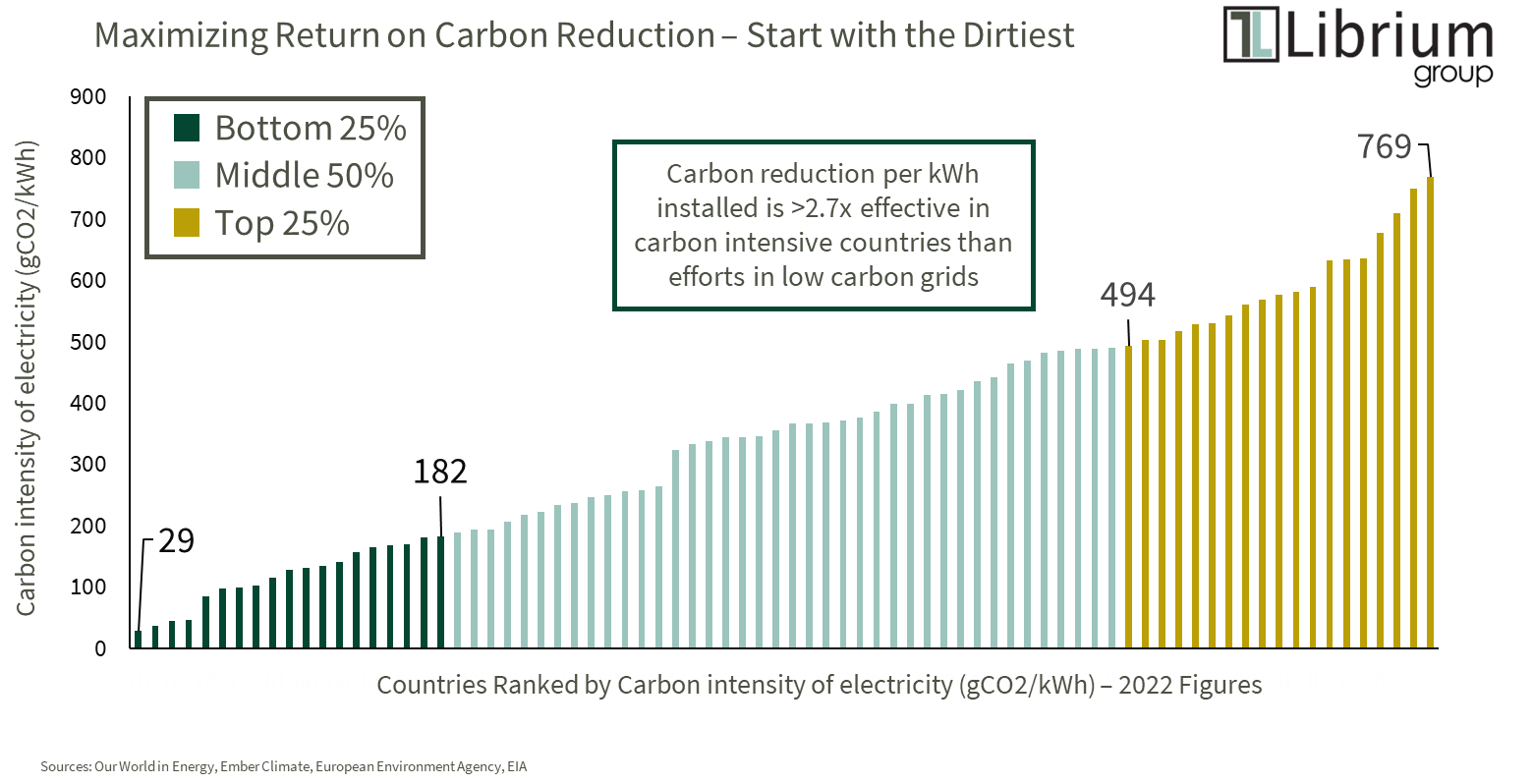Increasing Returns on Carbon Reduction Efforts
Ever considered how maximizing your return on carbon reduction would impact your company's sustainability strategy?
Not all grids are created equal. The type of energy a grid relies upon – coal, gas, nuclear, solar, or wind – determines its carbon intensity.
Here's an example: A kilowatt-hour (kWh) of renewable energy added to a coal-heavy grid could significantly reduce carbon intensity more than a similar kWh added to an already decarbonized grid.
Do you operate in multiple electricity systems, domestically or internationally? How well do you know the local grid carbon intensity where your company operates? Understanding this could help you to maximize carbon reduction across your renewable portfolio.
For example, a renewable project in the United Kingdom could potentially yield 257 gCO2/kWh in carbon reduction. Meanwhile, the same investment in Australia could nearly double that figure, yielding around 503 gCO2/kWh. Same investment, different carbon abatement impacts, all due to variations in grid carbon intensity.





